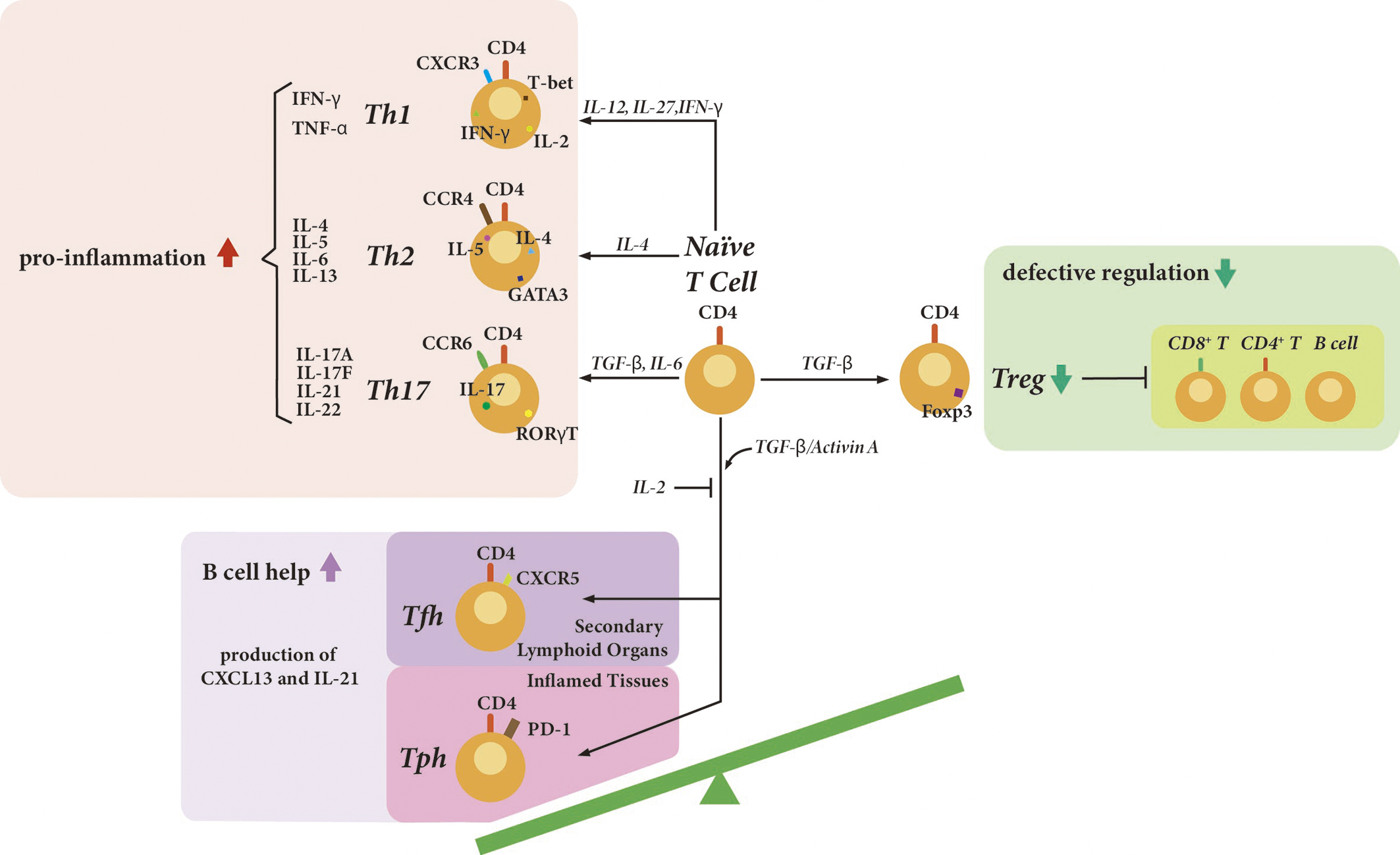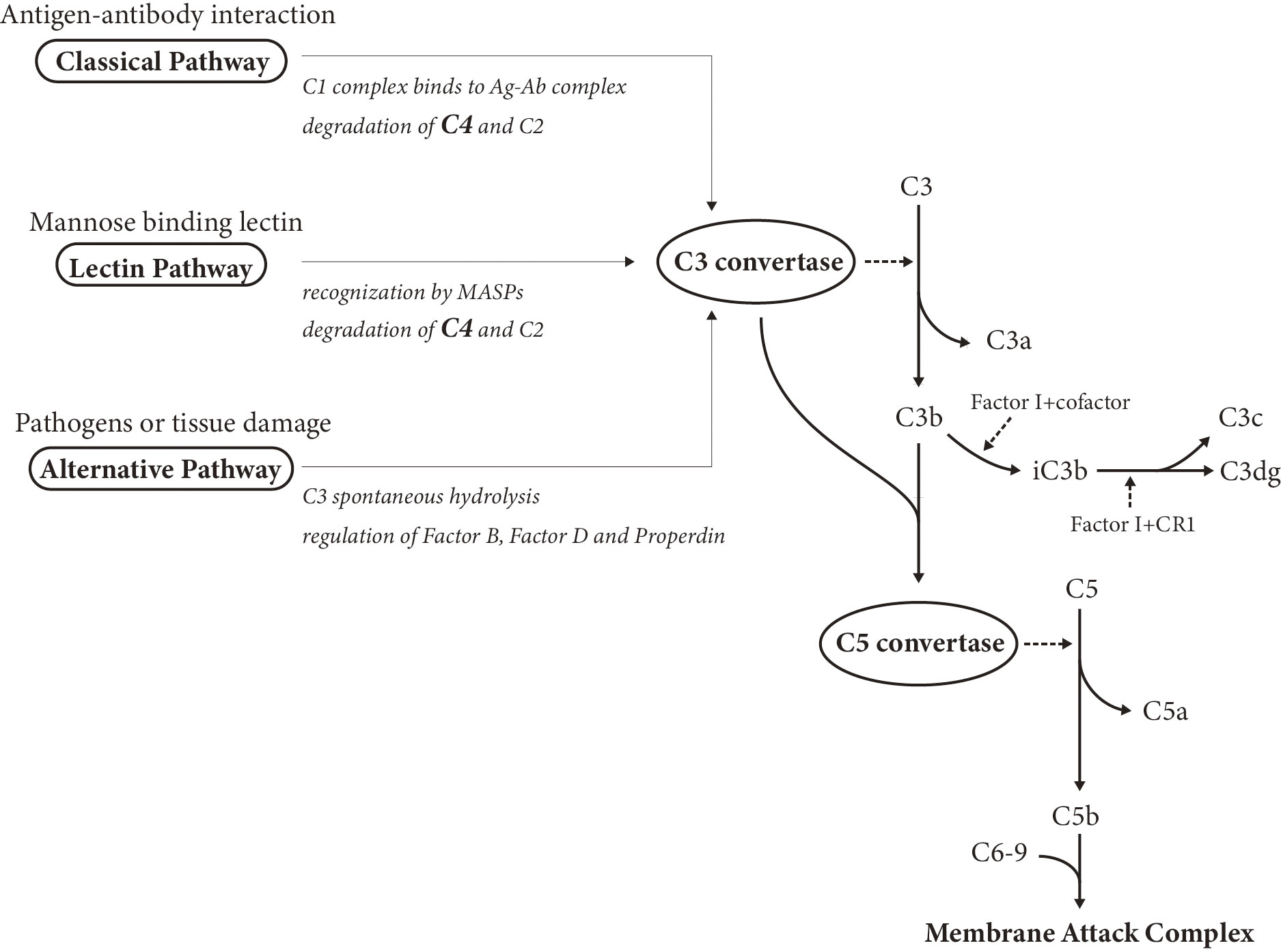Figure 1. The pathogenesis of systemic lupus erythematosus focusing on T cell and B cell subsets.
Naïve T cells differentiate into specific subsets in response to respective cytokine stimulations. In SLE, the differentiation into Th1, Th2, and Th17 subsets is upregulated. The expanded Th1, Th2, and Th17 subsets produce key pro-inflammatory and inflammatory cytokines such as TNF-α, IL-6, IFN-γ, and IL-17. Consequently, patients with SLE are prone to developing inflammation. Moreover, the proportions of Tfh and Tph subsets differentiated from naïve T cells through the stimulation of TGF-β and activin A are increased in secondary lymphoid organs and inflamed tissues, respectively. Their production of CXCL13 and IL-21 helps the proliferation and maturation of B cells, subsequently promoting the production of autoantibodies. At the same time, the regulatory function of Treg cells is weakened, making the suppression of inflammation and autoantibody production less efficient.
Abbreviations: CCR: C-C chemokine receptor; CXCL: C-X-C chemokine ligand; CXCR: C-X-C chemokine receptor; IFN: interferon; IL: interleukin; PD-1: programmed death-1; TNF: tumor necrosis factor; Tfh: follicular helper T cells; TGF-β: transforming growth factor-β; Th1: T helper 1 cells; Th2: T helper 2 cells; Th17: T helper 17 cells; Tph: peripheral helper T cells; Treg: regulatory T cells.
From: Potential Biomarkers in Systemic Lupus Erythematosus

Figure 2. The complement cascade.
The complement cascade can be initiated in three pathways, which are respectively described as the classical pathway, lectin pathway, and alternative pathway. The C3 convertase produced by each pathway promotes the degradation of C3. The C3b fragment sequentially constitutes the C5 convertase and participates in the following processes. The C3b fragment is quickly degraded to smaller fragments after its deposition, mediated by complement factor I and cofactors.
Abbreviations: Ag: antigen; Ab: antibody; CR1: complement receptor 1; MASP: mannose-binding lectin-associated serine protease.
From: Potential Biomarkers in Systemic Lupus Erythematosus


